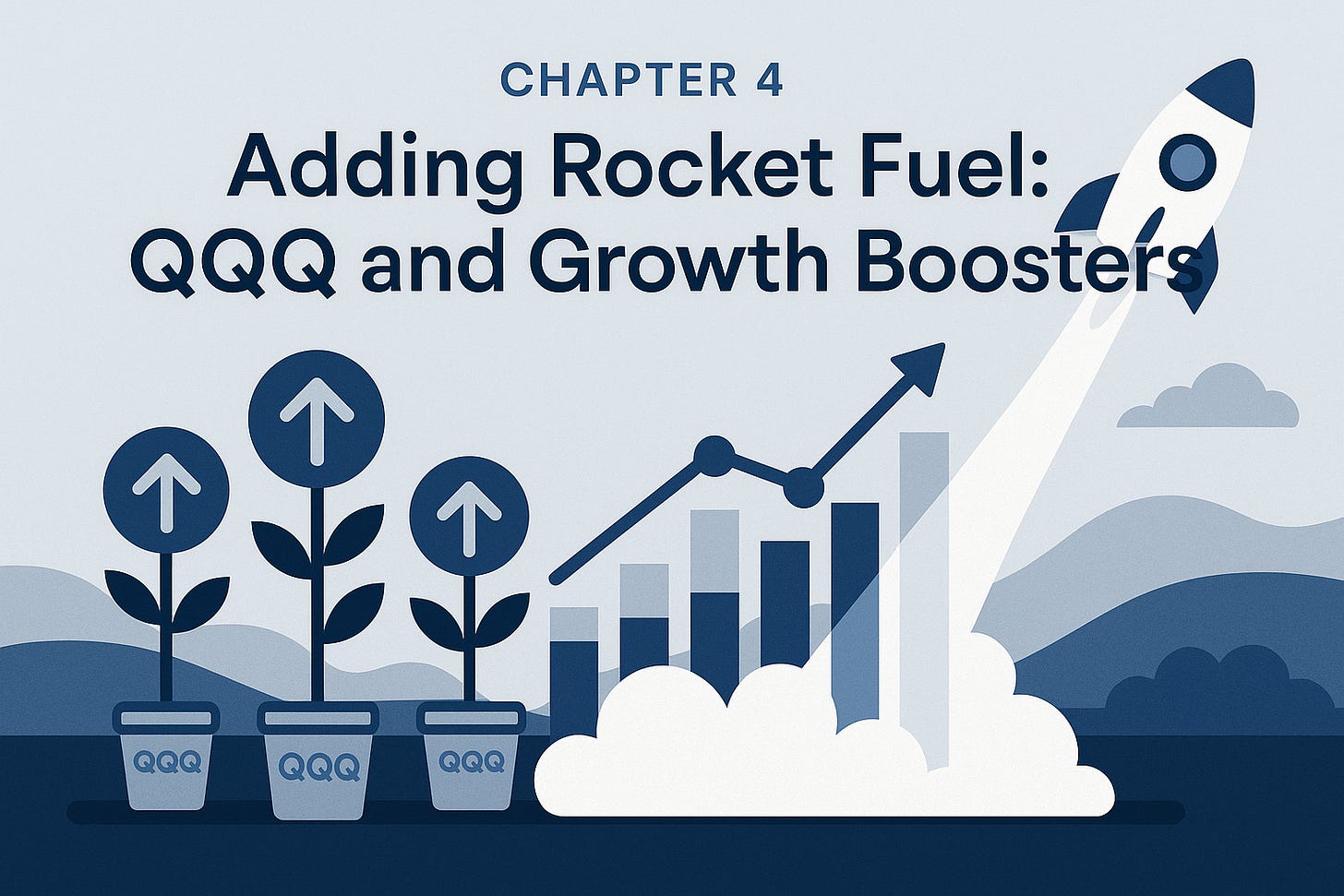Chapter 4 – Adding Rocket Fuel: QQQ and Growth Boosters
If VTI and SPY are my reliable Honda Civic, QQQ is my Ferrari—thrilling performance but you better hold on tight during the ride.
The foundation is set. VTI provides total market exposure, SPY adds large-cap stability, and together they capture the broad success of American business. But what if you want more? What if you believe technology will continue…
Keep reading with a 7-day free trial
Subscribe to Wealth Insights to keep reading this post and get 7 days of free access to the full post archives.

